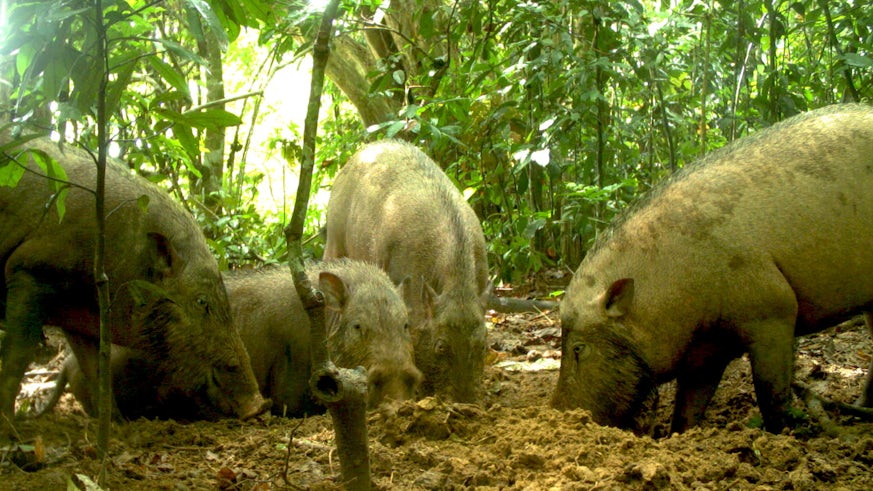Tracking Borneo’s bearded pigs
13 June 2018

High tech trackers have been placed on Borneo’s bearded pigs for the first time, helping to secure the future of the vulnerable species.
Researchers from the Danau Girang Field Centre, a collaborative research facility managed by Cardiff University and Sabah Wildlife Department, have attached a GPS collar to a bearded pig in Sabah for the first time, giving them an unprecedented insight into the animal’s migratory routes across the world’s third largest island.
The rainforests of Borneo are becoming increasingly fragmented, due to deforestation and the conversion of forest for agriculture. The innovative GPS technology was placed on a 65 kilogram female pig in Kinabatangan, allowing conservation biologists and government wildlife officials to track her movements through the changing habitat.
Dr Benoit Goossens, Cardiff University and Director of the Danau Girang Field Centre, said: “This is the first time that a GPS collar has been attached to a bearded pig, a species that is increasingly under siege.
“For eons, huge herds of bearded pigs have ranged over vast distances through Borneo’s forests, rivers and mountains to find food. Along the way, they’ve been hunted, and continue to be the most important source of wild meat in areas of Borneo.
“Despite the pig’s staggering movements and cultural significance, almost nothing is known about their migration.”
The information collected from the GPS collar will provide important clues about the fate of the species, and will allow conservationists to develop policies to protect the bearded pigs of Borneo.
David Kurz, University of California Berkeley, said: “In my opinion, where these pigs are moving and what they are doing along the way is one of the great unsolved mysteries of Southeast Asian ecology.”
The team of researchers will collar ten bearded pigs in the Kinabatangan region of Sabah, with the aim of understanding how the pigs are adapting to human encroachment on their habitat.

“For the last month and a half, we have been monitoring her movements and have found that she has stayed in one area, and has also foraged in a neighbouring oil palm plantation once or twice a week for extra food.
“This is interesting to us as researchers as we are investigating whether bearded pigs are no longer migrating when they have an easy access to an abundance of food like oil palm.
“But this will take several years of research to confirm.
“The threats to this species of wild pig are abundant. But fortunately, these humbly charismatic animals have a dedicated team of researchers on their side fighting to protect them.
“By following her footsteps using state of the art technology, we can help protect her kin.
“But we are racing against time, as the bearded pig is already considered a vulnerable species, the species and its migrations are thought to be disappearing before they have even been properly documented,” said Benoit.
This project is supported by the National Geographic Society, Waitt Foundation, Fulbright U.S. Student Program, Ocean Park Conservation Foundation Hong Kong, Mustard Seed Foundation, Columbus Zoo & Aquarium, American Philosophical Society, UC Berkeley College of Natural Resources, and US National Science Foundation.
